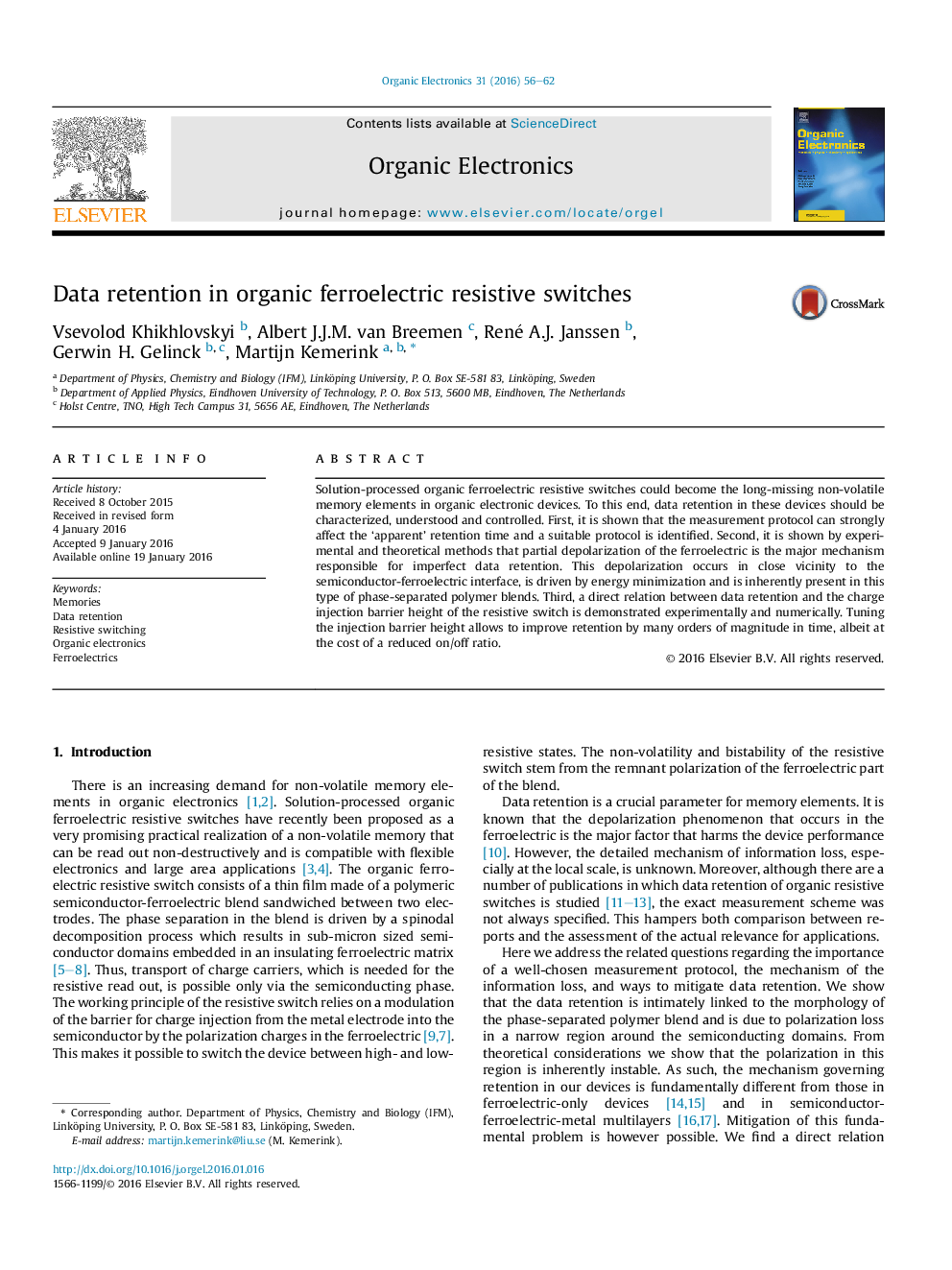| Article ID | Journal | Published Year | Pages | File Type |
|---|---|---|---|---|
| 1267030 | Organic Electronics | 2016 | 7 Pages |
•Data retention in organic ferroelectric resistive switches is characterized, understood and controlled.•Imperfect data retention results from partial depolarization near the ferroelectric–semiconductor interface.•The retention time can be improved by tuning the injection barrier height, albeit at the cost of a reduced on/off ratio.
Solution-processed organic ferroelectric resistive switches could become the long-missing non-volatile memory elements in organic electronic devices. To this end, data retention in these devices should be characterized, understood and controlled. First, it is shown that the measurement protocol can strongly affect the ‘apparent’ retention time and a suitable protocol is identified. Second, it is shown by experimental and theoretical methods that partial depolarization of the ferroelectric is the major mechanism responsible for imperfect data retention. This depolarization occurs in close vicinity to the semiconductor-ferroelectric interface, is driven by energy minimization and is inherently present in this type of phase-separated polymer blends. Third, a direct relation between data retention and the charge injection barrier height of the resistive switch is demonstrated experimentally and numerically. Tuning the injection barrier height allows to improve retention by many orders of magnitude in time, albeit at the cost of a reduced on/off ratio.
Graphical abstractData retention in organic ferroelectric resistive switches is characterized, understood and controlled. Imperfect data retention results from partial depolarization near the ferroelectric–semiconductor interface. The retention time can be improved by orders of magnitude by tuning the injection barrier height, albeit at the cost of a reduced on/off ratio.Figure optionsDownload full-size imageDownload as PowerPoint slide
